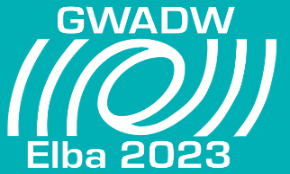Conveners
O4 commissioning, O5 and postO5 plans
- Jenne Driggers (Caltech)
- Yoichi Aso (National Astronomical Observatory of Japan)
- Daniel Sigg (LIGO Hanford Observatory)
- Viviana Fafone (Istituto Nazionale di Fisica Nucleare)
Both the LIGO Livingston and LIGO Hanford Observatories have made significant progress in upgrading detector sensitivity in preparation for the fourth observing run. This talk will summarize the various equipment upgrades and detector commissioning efforts performed to achieve the new sensitivity.
A quick overview of O4 LIGO frequency dependent squeezing (on behalf of O4 LIGO squeezer team).
LIGO Hanford has achieved 430 kilowatts of resonating laser power prior to observing run four, the highest in any long-baseline interferometer in the world. Achieving this level of power required major upgrades and advanced commissioning techniques. In this presentation we will review the A+ upgrades between O3 and O4, overview the measured resonating power at LIGO Hanford, and discuss the...
The LSC plans on upgrading the current LIGO detectors to a detector known as A♯ after the conclusion of the fifth observing run. A♯ includes an increase of the test mass mass to 100 kg, 10 dB of frequency dependent squeezing, an increase in the arm power to 1.5 MW, redesigned suspensions, a reduction in the coating Brownian noise by a factor of two, improved seismic isolation, and suppression...
The forth Observing Run (O4) of the Advanced gravitational wave detectors will start on May 25th. This talk aims to present the current status of the Virgo detector performance in terms of sensitivity and duty cycle. Then an overview of the challenges that the commissioning has faced as a consequence of the upgrades of the detector will be given. Finally, a description of the main actions to...
In this work I’ll present the main issues that have been discovered during the phase of Commissioning of the AdvancedVirgo+ detector. Indeed, the control of the interferometer become more complex in presence of marginally stable cavities as it is strongly affected by optical defects. Starting from the installation of the new Auxiliary Laser System, I will discuss how we tried to improve the...
The detection of gravitational waves is limited by quantum noise from vacuum field fluctuations. To overcome this limitation, squeezed vacuum states can reshape the shot and radiation pressure noise contributions by manipulating the quadrature amplitude distribution. While injecting a frequency-independent squeezed (FIS) vacuum state allowed for sub-shot noise limited sensitivity in the last...
Detectors of the post-O5 era, as Virgo_nEXT and third generation detectors, as Einstein Telescope aim to achieve squeezing levels of the order of 10 dB. This implies a drastic reduction in optical losses, down to a level of a few percent. In this presentation, we will describe the study to reach these squeezing levels in the context of the Virgo_nEXT concept study, and the possible synergies...
KAGRA, the interferometric gravitational-wave telescope in Japan, will
join the upcoming O4 with the better sensitivity than O3GK. Since the
spring of 2020, we have performed overhauling of the interferometer to
improve the sensitivity and stability. In this talk, we will report on
our integration and commissioning works until today, and show some plans
for the future.

